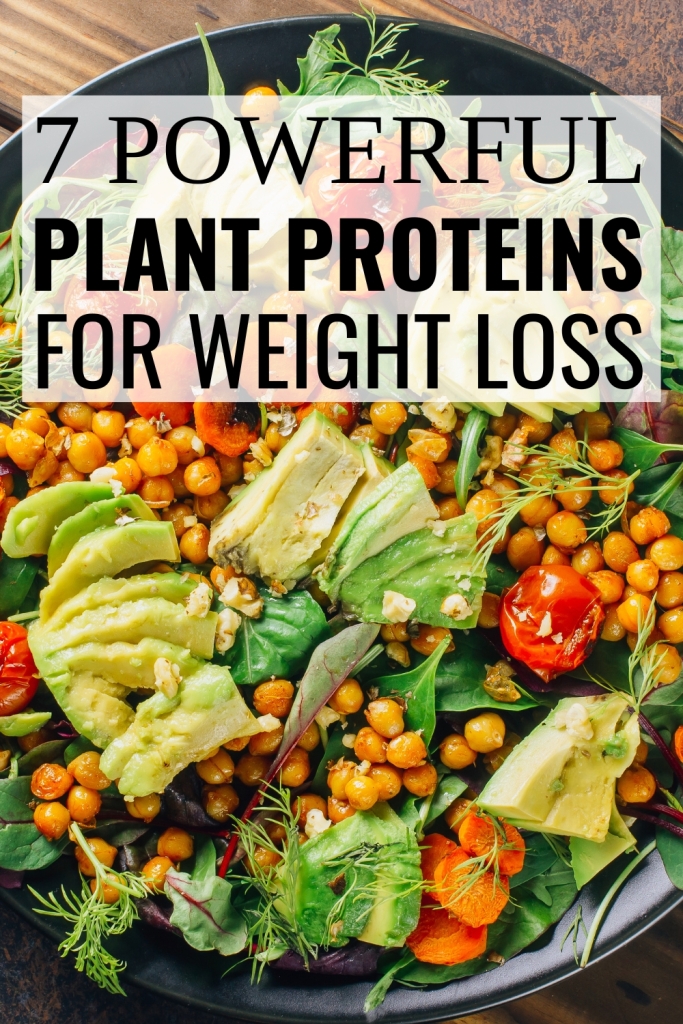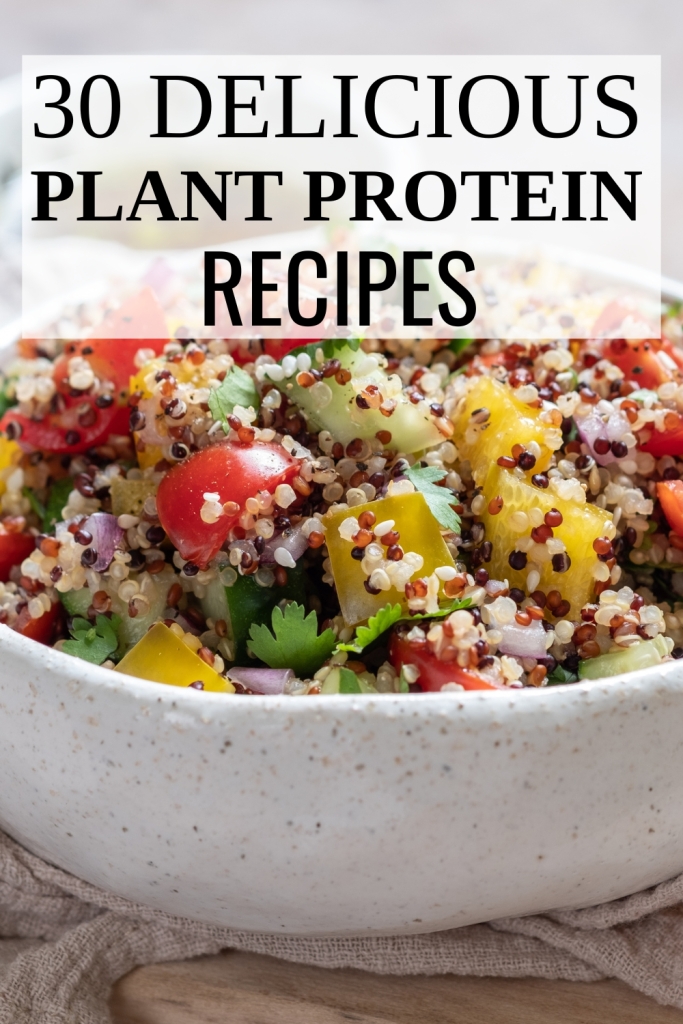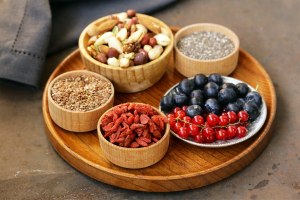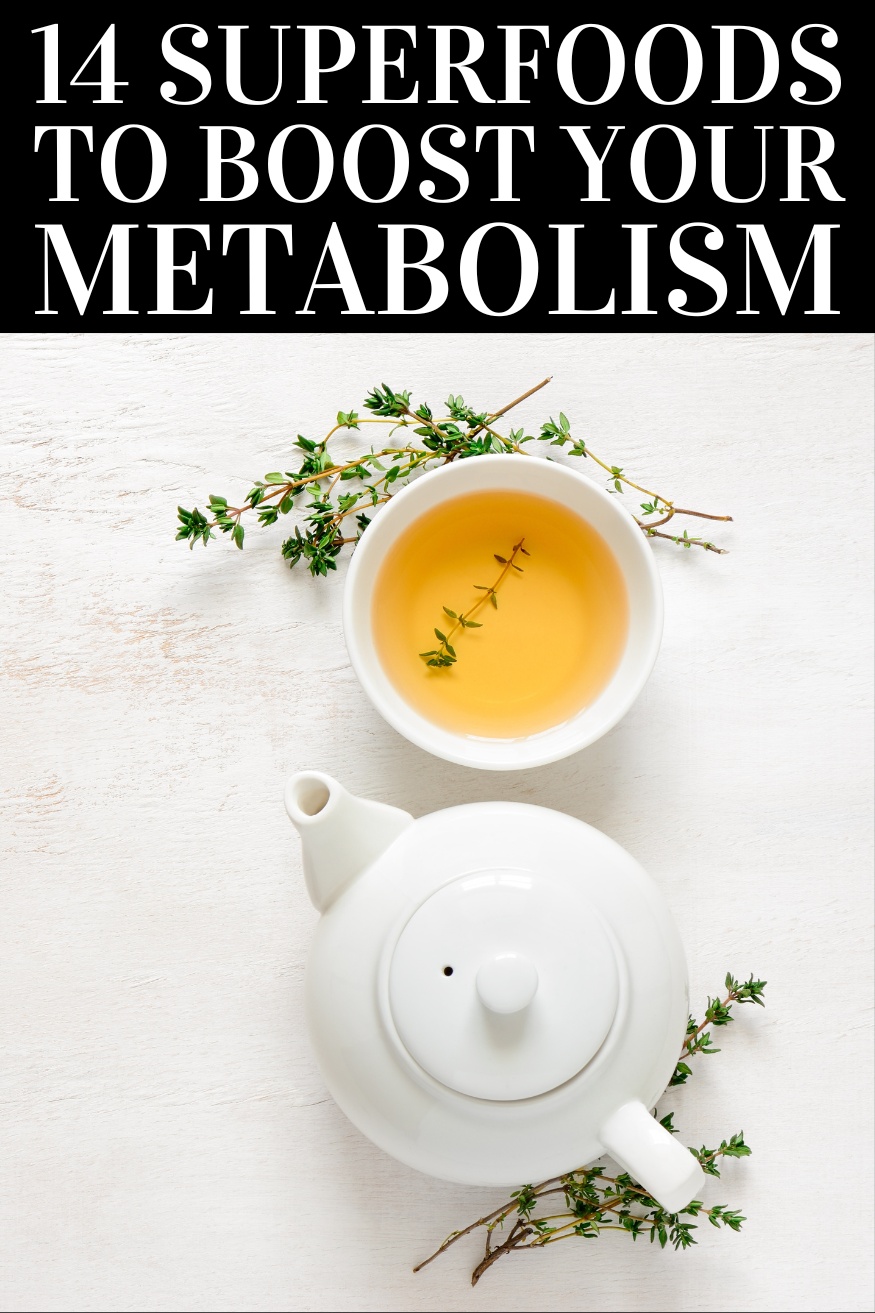Embarking on a weight loss journey can often feel like navigating a maze of conflicting advice and fad diets. Amidst the cacophony of information, one principle stands out: the crucial role of protein in achieving sustainable and healthy weight loss. Protein isn't just a buzzword; it's a powerhouse nutrient that can revolutionize your approach to shedding those extra pounds.
Protein, the building block of our bodies, plays a multifaceted role in weight management. It boosts metabolism, curbs appetite, and preserves lean muscle mass – all essential elements in the pursuit of a healthier you. While animal-based protein sources like meat and dairy have long dominated the conversation, a growing body of evidence points to the immense potential of plant-based protein in facilitating effective and sustainable weight loss.
In this article, we delve into the world of plant-based protein, exploring seven remarkable sources that can fuel your weight loss goals and nourish your body from the inside out. We'll uncover the science behind their effectiveness, their unique benefits, and practical tips on incorporating them into your daily diet. Whether you're a seasoned vegan or simply looking to diversify your protein intake, prepare to be inspired by the power of plants.
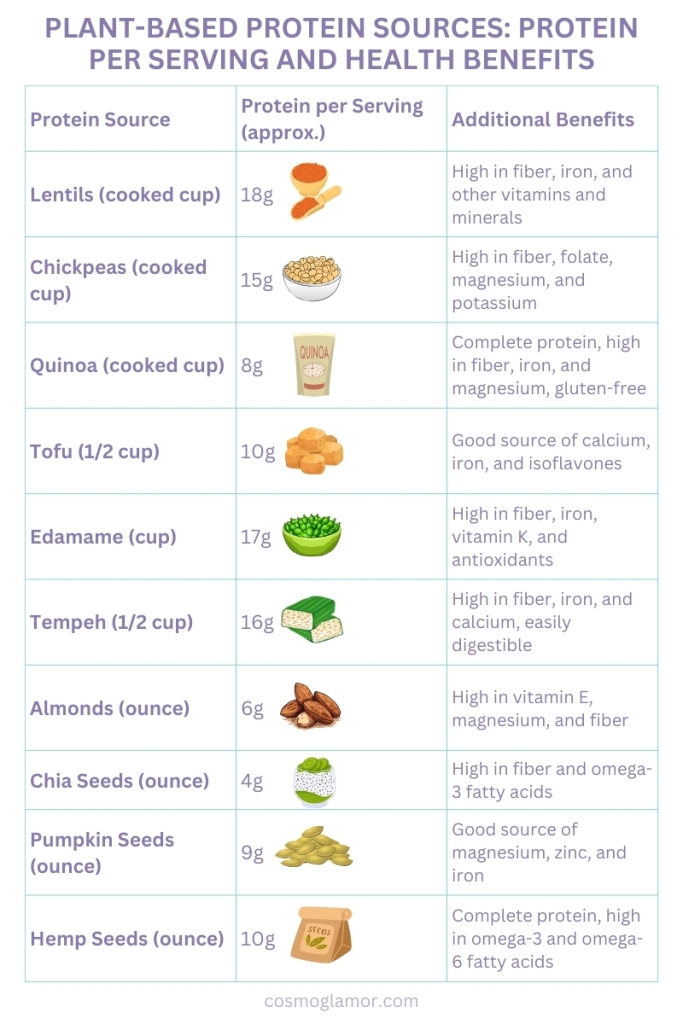
1. Lentils: The Humble Powerhouse
Often overlooked in favor of their flashier counterparts, lentils are a nutritional powerhouse that deserves a prime spot in your pantry. These tiny legumes pack a serious protein punch, offering around 18 grams per cooked cup. But their benefits extend far beyond their protein content. Lentils are also rich in fiber, which promotes satiety and helps regulate blood sugar levels. They're a good source of iron, which is essential for energy production, and they contain a variety of other vitamins and minerals that support overall health.
Versatile and Delicious
Lentils' mild flavor and versatility make them an excellent addition to various dishes. They can be added to soups, stews, salads, and even veggie burgers. For a quick and satisfying meal, try a lentil curry with brown rice or a hearty lentil soup with vegetables.
Recipe Ideas for Lentils:
- Vegan Lentil Soup: This is a classic comfort food that is both hearty and nutritious. It's made with lentils, vegetables, and herbs, and it's perfect for a cold day.
- Lentil Curry: This dish is packed with flavor, thanks to the combination of spices, coconut milk, and lentils. It's a great option for a weeknight meal, and it's also perfect for entertaining.
- Lentil Loaf: This is a vegetarian alternative to meatloaf that is just as satisfying. It's made with lentils, vegetables, and breadcrumbs, and it's baked until golden brown.
2. Chickpeas: The Mediterranean Marvel
Chickpeas, also known as garbanzo beans, have been a staple of Mediterranean cuisine for centuries, and for good reason. These versatile legumes boast an impressive 15 grams of protein per cooked cup, along with a wealth of other nutrients. They're high in fiber, which aids digestion and promotes gut health. Chickpeas are also a good source of folate, a B vitamin that plays a crucial role in cell growth and development, and they contain several minerals, including magnesium and potassium, which support heart health and muscle function.
Creative Culinary Applications
Chickpeas can be enjoyed in countless ways. They can be roasted for a crunchy snack, mashed into hummus, or added to salads and grain bowls. For a flavor-packed meal, try a chickpea curry with coconut milk or a Mediterranean chickpea salad with feta cheese and olives.
Recipe Ideas for Chickpeas:
- Vegan Chickpea Curry: This fragrant and flavorful curry is packed with protein and fiber. It's perfect for a comforting weeknight meal.
- Chickpea Salad Sandwich: This classic sandwich is a great way to use up leftover chickpeas. It's also a healthy and satisfying lunch option.
- Roasted Chickpeas: These crispy and crunchy chickpeas are a great snack or salad topper. They're also a good source of protein and fiber.
- Chickpea Pasta: This gluten-free pasta is a great alternative to traditional wheat pasta. It's also a good source of protein and fiber.
3. Quinoa: The Ancient Grain with a Modern Twist
Quinoa, often referred to as a “superfood,” is technically a seed but is prepared and consumed like a grain. It stands out from other grains due to its complete protein profile, meaning it contains all nine essential amino acids that our bodies cannot produce on their own. While a cooked cup of quinoa provides around 8 grams of protein, its complete protein status makes it a highly efficient source, ensuring your body can utilize all the protein it offers for muscle building and repair. It’s also a good source of fiber, iron, and magnesium. It's also naturally gluten-free, making it a suitable option for those with celiac disease or gluten sensitivity.
A Versatile Base for Meals
Quinoa's fluffy texture and nutty flavor make it a versatile base for various dishes. It can be used as a substitute for rice or couscous, added to salads, or even incorporated into breakfast bowls. For a protein-packed breakfast, try quinoa porridge with berries and nuts or a savory quinoa bowl with roasted vegetables and avocado.
Recipe Ideas for Quinoa:
- Mediterranean Quinoa Salad: A refreshing and flavorful salad bursting with Mediterranean ingredients like cucumbers, tomatoes, Kalamata olives, and feta cheese (vegan version available). The lemon vinaigrette adds a zesty touch.
- Quinoa Stuffed Bell Peppers: Vibrant bell peppers filled with a savory mixture of quinoa, vegetables, and herbs. A healthy and satisfying meal that's perfect for lunch or dinner.
- Black Bean Quinoa Burgers: These hearty and flavorful burgers are packed with protein and fiber from black beans and quinoa. Top them with your favorite vegan burger toppings and enjoy!
- Quinoa Breakfast Bowl: A nutritious and delicious way to start your day. Quinoa cooked with almond milk and topped with fresh fruit, nuts, and seeds. A great alternative to oatmeal.
4. Tofu: The Soybean Shape-Shifter
Tofu, made from coagulated soy milk, is a staple in many vegetarian and vegan diets due to its high protein content and versatility. A half-cup serving of tofu provides around 10 grams of protein, along with calcium, iron, and other essential nutrients. It's also a good source of isoflavones, plant compounds that may have health benefits, including reducing the risk of certain cancers and improving bone health. Please note that soy is a common allergen, so individuals with soy allergies should opt for alternative protein sources.
Culinary Chameleon
Tofu's neutral flavor and ability to absorb other flavors make it a culinary chameleon. It can be marinated, stir-fried, grilled, or baked, and it can be used in sweet or savory dishes. For a satisfying meal, try a tofu scramble with vegetables or a stir-fry with tofu and your favorite sauce.
Recipe Ideas for Tofu:
- Mapo Tofu: A classic Sichuan dish with a spicy and savory sauce, this dish is perfect for those who enjoy a bit of heat. The soft tofu absorbs the flavors of the sauce beautifully.
- Tofu Scramble: This versatile dish is a great breakfast or brunch option. Crumbled tofu is seasoned with turmeric, nutritional yeast, and other spices to mimic the taste and texture of scrambled eggs.
- General Tso's Tofu: This popular takeout dish can be easily recreated at home with crispy tofu coated in a sweet and tangy sauce. Serve it with steamed broccoli and brown rice for a complete meal.
- Pad Thai with Tofu: This classic Thai noodle dish is a crowd-pleaser. Pan-fried tofu adds protein and texture to the rice noodles, which are tossed with a flavorful tamarind sauce.
5. Edamame: The Snackable Soybean
Edamame, young soybeans harvested before they fully mature, are a delicious and nutritious snack or addition to meals. A cup of edamame provides around 17 grams of protein, along with fiber, iron, and vitamin K. They're also a good source of antioxidants, which protect our cells from damage caused by free radicals. As with tofu, individuals with soy allergies should avoid edamame.
Simple and Satisfying
Edamame can be enjoyed in their pods, steamed or boiled, and sprinkled with sea salt for a simple and satisfying snack. They can also be shelled and added to salads, stir-fries, or grain bowls. For a flavorful twist, try roasted edamame with garlic and chili flakes.
Recipe Ideas for Edamame:
- Edamame Hummus: This creamy and flavorful hummus is a great way to incorporate edamame into your diet. It's a good source of protein and fiber and can be served with pita bread, vegetables, or crackers.
- Edamame and Corn Salad: This refreshing salad is perfect for a summer picnic or potluck. It's a light and healthy dish that's packed with flavor.
- Edamame Fried Rice: This quick and easy fried rice is a great way to use up leftover rice. It's a hearty and satisfying meal that's perfect for lunch or dinner.
- Edamame Pesto Pasta: This creamy and flavorful pasta dish is a great alternative to traditional pesto. It's a good source of protein and healthy fats and can be served with your favorite vegetables.
- Edamame Guacamole: This unique guacamole is a delicious way to add some extra protein and fiber to your dip. It's a perfect appetizer for a party or gathering.
6. Tempeh: The Fermented Powerhouse
Tempeh, made from fermented soybeans, is a nutrient-dense food with a firm texture and nutty flavor. A half-cup serving of tempeh provides around 16 grams of protein, along with fiber, iron, and calcium. The fermentation process also enhances its digestibility and may increase the bioavailability of certain nutrients. As with other soy products, tempeh should be avoided by individuals with soy allergies.
Culinary Creativity
Tempeh can be marinated, grilled, crumbled, or sliced, and it can be used in various dishes. For a hearty meal, try a tempeh burger with your favorite toppings or a tempeh stir-fry with vegetables and a flavorful sauce.
Recipe Ideas for Tempeh:
- Tempeh Bacon: Crispy, smoky, and savory, tempeh bacon is a fantastic plant-based alternative to traditional bacon. It's perfect for breakfast sandwiches, salads, or simply enjoying on its own.
- Tempeh Tacos: These flavorful tacos are packed with protein and nutrients. Tempeh is marinated in a delicious blend of spices and then crumbled and pan-fried until crispy. It's then served in warm tortillas with your favorite toppings.
- Tempeh Stir-Fry: This quick and easy stir-fry is a perfect weeknight meal. Tempeh is combined with colorful vegetables and a flavorful sauce for a satisfying and healthy dish.
- Tempeh Satay: These Indonesian-inspired skewers are a real crowd-pleaser. Tempeh is marinated in a rich peanut sauce and then grilled or baked until golden brown. It's served with a dipping sauce for an extra burst of flavor.
- Tempeh Bolognese: This hearty and comforting bolognese is a great plant-based alternative to the traditional meat-based version. Tempeh is crumbled and cooked with tomatoes, vegetables, and herbs for a rich and flavorful sauce that's perfect for pasta.
7. Nuts and Seeds: The Nutrient-Dense Nibbles
Nuts and seeds, while small in size, are nutritional powerhouses that offer a concentrated dose of protein, healthy fats, fiber, vitamins, and minerals. They can be enjoyed as a snack, added to salads or yogurt, or used to make homemade nut butter. It is important to note that nuts and seeds are common allergens, so individuals with nut allergies should opt for alternative protein sources.
- Almonds: A one-ounce serving (about 23 almonds) provides around 6 grams of protein, along with vitamin E, an antioxidant that protects cells from damage, magnesium, which supports muscle and nerve function, and fiber for digestive health.
- Chia Seeds: These tiny seeds pack a powerful nutritional punch, offering around 4 grams of protein and 10 grams of fiber per ounce. They're also a good source of omega-3 fatty acids, essential fats that support heart health and brain function, and are particularly beneficial for individuals following a plant-based diet.
- Pumpkin Seeds: These seeds are a good source of protein, providing around 9 grams per ounce, along with magnesium for bone health, zinc for immune function, and iron for oxygen transport.
- Hemp Seeds: These seeds are a complete protein source, offering around 10 grams of protein per ounce, along with omega-3 fatty acids and fiber. They also contain a good balance of omega-6 fatty acids, contributing to overall health when consumed in moderation.
Snack Smart
Nuts and seeds can be a healthy and satisfying snack, but it's important to watch your portion sizes, as they're also high in calories. A small handful is usually a good serving size. Choose unsalted or lightly salted varieties to limit your sodium intake. You can also incorporate them into your meals by sprinkling them on salads, yogurt, or oatmeal.
Recipe Ideas for Nuts and Seeds:
- Energy Balls: A perfect on-the-go snack, these no-bake energy balls are packed with nutrients and flavor. Combine your favorite nuts, seeds, dried fruits, and a sweetener like maple syrup or dates in a food processor, roll into balls, and enjoy!
- Homemade Granola: Make your own granola for a healthy and customizable breakfast or snack. Toss oats, nuts, seeds, and dried fruits with oil and maple syrup, bake until golden brown, and enjoy with plant-based milk or yogurt.
- Seed Crackers: These crispy crackers are a great gluten-free option and are packed with healthy fats and fiber. Mix together flax seeds, chia seeds, sunflower seeds, and sesame seeds with water and seasonings, spread thinly on a baking sheet, and bake until crisp.
- Trail Mix: A classic snack for hiking or any time you need a boost of energy. Combine your favorite nuts, seeds, dried fruits, and even some vegan chocolate chips for a sweet treat.
Conclusion
Incorporating a variety of plant-based protein sources into your diet can be a game-changer for your weight loss journey. These seven options offer a delicious and nutritious way to fuel your body, curb cravings, and achieve your goals. Remember, sustainable weight loss is about making long-term lifestyle changes, and embracing plant-based protein is a step in the right direction.
It's important to note that individual needs may vary. Consult a healthcare professional or registered dietitian for personalized advice on incorporating plant-based protein into your diet, especially if you have any underlying health conditions or dietary restrictions. With a little planning and creativity, you can enjoy a delicious and fulfilling plant-based diet that supports your weight loss goals and overall well-being.
Remember:
- Prioritize Variety: Include a range of plant-based protein sources in your diet to ensure you're getting all the essential amino acids your body needs.
- Combine with Whole Grains: Pair plant-based protein with whole grains for a complete and balanced meal.
- Experiment with Recipes: Explore new recipes and cooking techniques to discover delicious ways to incorporate plant-based protein into your meals. Consider searching online for “easy lentil recipes for weight loss” or “creative ways to use tempeh.”
- Listen to Your Body: Pay attention to your hunger and fullness cues to ensure you're eating the right amount of food for your body's needs.
By embracing the power of plant-based protein, you'll not only be nourishing your body but also contributing to a healthier planet. The reduced environmental impact of plant-based agriculture compared to animal agriculture is a significant advantage. So, let's celebrate the abundance of plant-based options available and embark on a journey towards a healthier, happier you and a more sustainable world.
